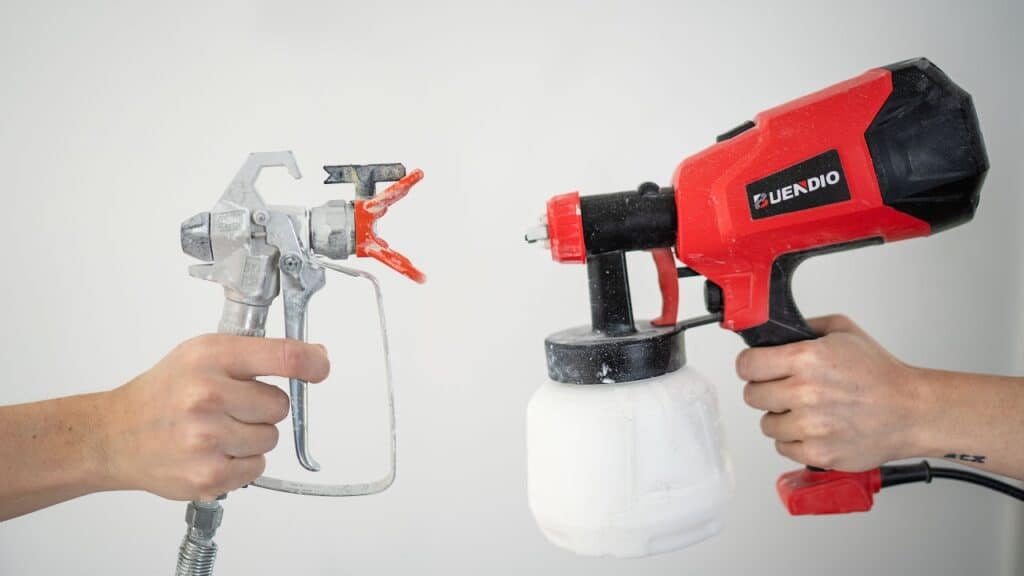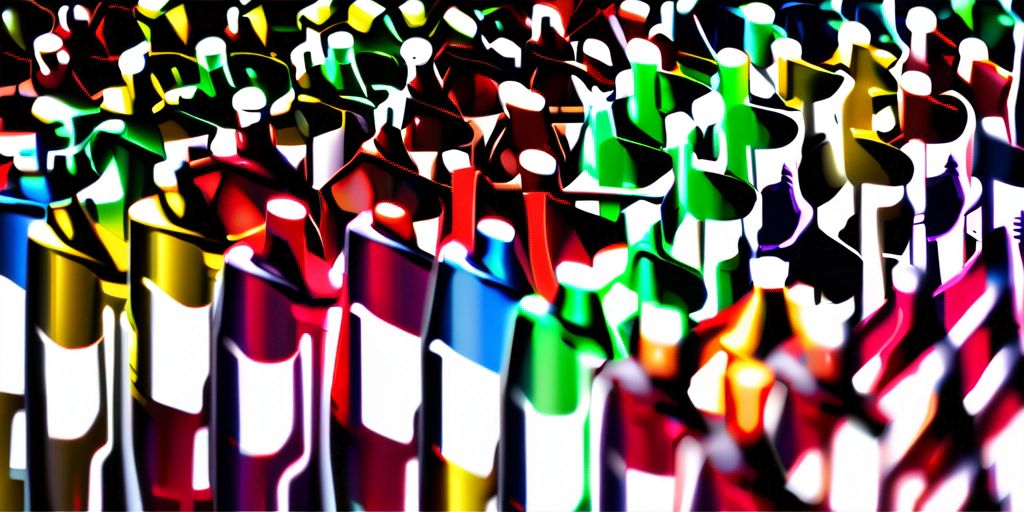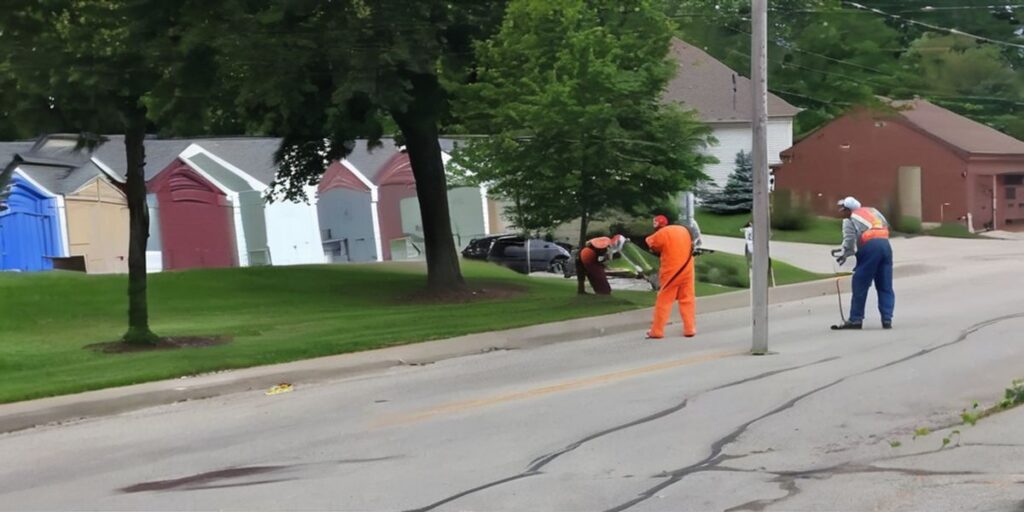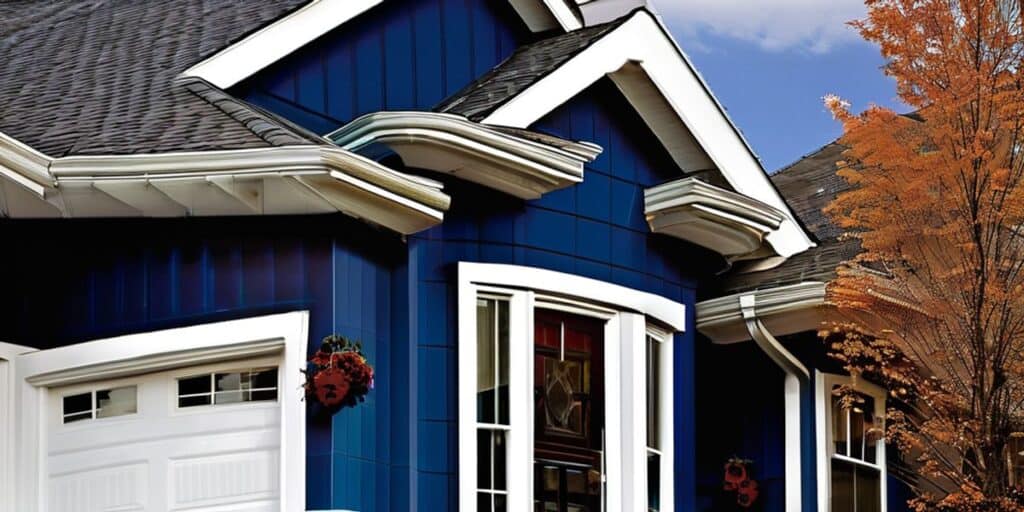In Brantford, exterior painting projects often contend with the challenge of overspray, which can lead to wastage of materials, environmental contamination, and additional cleanup costs. Understanding and implementing strategies to reduce overspray is crucial for painters and contractors to ensure efficiency, professionalism, and compliance with environmental standards. This article explores the fundamentals of overspray, preparation techniques, control methods, tool selection, and cleanup practices to help professionals in Brantford execute exterior painting projects with minimal overspray.
Key Takeaways
- Identifying the factors that contribute to overspray and the importance of weather conditions can help in planning and executing painting projects with better control.
- Proper surface preparation, using the right equipment, and implementing protective measures are essential steps to minimize overspray.
- Adopting the correct spray technique, thinning paint appropriately, and using wind shields or spray booths are effective overspray control methods.
- Choosing the right type of paint and investing in advanced low-overspray nozzles and quality sprayers can lead to long-term cost savings and better project outcomes.
- Implementing best practices for cleanup, preventing environmental contamination, and proper disposal of paint waste are crucial for sustainable painting practices.
Understanding the Basics of Overspray
What is Overspray and Why Does it Matter?
Overspray refers to the excess paint that is not deposited on the intended surface during a spray painting project. This can occur in both residential and commercial projects, and managing it effectively is crucial for several reasons:
- Ensures a clean and professional finish: Minimizing overspray contributes to the overall quality of the painting job.
- Preserves surrounding areas: Adjacent surfaces and objects are protected from unintended paint application.
- Reduces waste: Less overspray means more efficient use of paint, which can lead to cost savings.
- Environmental responsibility: Proper overspray control helps prevent environmental contamination.
In Brantford, where weather can be unpredictable, understanding and controlling overspray is especially important. The local climate can influence the behavior of the paint particles in the air, making it a significant factor to consider for any professional painting company.
When tackling exterior painting projects, it’s essential to be aware of the potential for overspray and take proactive steps to minimize its impact.
Selecting the right tools and techniques is key to reducing overspray. For instance, using a spray booth or wind shield can help contain the paint application to the desired area. Additionally, the type of paint and nozzle used can greatly affect the amount of overspray produced.
Factors Contributing to Overspray
Several factors can contribute to overspray, which is the unwanted dispersion of paint particles beyond the intended surface. Understanding these factors is crucial for minimizing their impact during exterior painting projects.
- Equipment settings: Incorrect pressure, nozzle size, and spray gun position can lead to excessive overspray.
- Distance and angle: The distance between the spray gun and the surface, as well as the angle at which paint is applied, are critical in controlling overspray.
- Paint viscosity: Thicker paints tend to produce more overspray due to their inability to atomize properly.
It’s essential to adjust equipment settings and technique according to the specific conditions of each project to achieve optimal results.
Additionally, environmental factors such as wind speed and direction can exacerbate overspray issues. Careful planning and the use of wind shields can help mitigate these effects, especially in areas prone to unpredictable weather, like the open spaces near the Grand River in Brantford.
The Impact of Weather Conditions on Overspray
Weather conditions play a pivotal role in the outcome of exterior painting projects. Understanding how different weather variables affect overspray can lead to more controlled and efficient painting applications.
- Temperature: High temperatures can cause paint to dry too quickly, leading to a rough finish. Conversely, low temperatures may prevent paint from adhering properly, increasing the likelihood of overspray.
- Humidity: Ideal painting conditions require moderate humidity. Excessive humidity can slow down the drying process, while low humidity might cause the paint to dry too rapidly and potentially crack.
- Wind: Wind can carry wet paint particles away from the target surface, directly contributing to overspray. It is crucial to monitor wind speed and direction during painting projects.
In Brantford, where the Grand River winds through the city, local painters must be particularly vigilant of the wind patterns to ensure a flawless finish.
By taking these factors into account, painters can adjust their methods and timing to minimize overspray, leading to a cleaner job and less waste.
Preparation Strategies for Minimizing Overspray
Surface Preparation Techniques
Proper surface preparation is a critical step in reducing overspray during exterior painting projects. Here are some key techniques to ensure a smooth and efficient painting process:
- Clean the surface thoroughly to remove dirt, dust, and debris that could interfere with paint adhesion.
- Repair any cracks or damages to the surface to prevent uneven paint application and potential overspray.
- Sanding the surface can create a more uniform area for the paint to adhere, reducing the likelihood of overspray.
By taking the time to prepare the surface correctly, painters can significantly decrease the amount of overspray and achieve a more professional finish.
It’s also important to cover and protect any areas that are not being painted. Use drop cloths and painter’s tape to shield windows, doors, and landscaping from unwanted paint. Remember, the goal is to apply paint only where it is intended, and meticulous preparation can make all the difference.
Choosing the Right Equipment
Selecting the appropriate equipment for an exterior painting project is a pivotal step in reducing overspray. Choosing the right painting equipment is crucial for interior and exterior projects. It’s essential to consider factors such as weather resistance, surface type, pressure settings, and nozzle sizes to achieve optimal results.
- Weather resistance: Equipment should be capable of operating effectively under the varying weather conditions of Brantford, such as humidity and temperature fluctuations.
- Surface type: Different surfaces require specific types of equipment to ensure proper paint adhesion and finish.
- Pressure settings: Adjustable pressure settings allow for greater control over the paint flow, which can help minimize overspray.
- Nozzle sizes: The size and shape of the nozzle affect the spray pattern and can be selected to suit the specific project needs.
Paint sprayers come in various types, each suited to particular tasks. High Volume Low Pressure (HVLP) spray guns, for example, are known for their ability to achieve a professional finish with paint, stain, and varnish while minimizing overspray.
When considering equipment, it’s not just about the immediate cost but also about the long-term savings. Investing in quality sprayers can lead to reduced paint waste and time savings, which is especially beneficial for frequent or large-scale projects.
For clean edges, especially when painting walls and ceilings, the precision of the equipment is paramount. While this article does not endorse specific products, it’s worth noting that the best paint edger can significantly enhance the quality of the job.
Protective Measures for Adjacent Areas
When undertaking an exterior painting project, it’s crucial to protect the surrounding areas from unintended paint application, commonly known as overspray. Here are some effective measures to ensure adjacent areas remain paint-free:
- Use drop cloths or plastic sheeting to cover plants, furniture, and other items.
- Apply painter’s tape along edges where overspray might occur, such as windows and trim.
- Employ temporary barriers or shields to block wind-driven overspray.
It’s also important to consider the direction of the wind and position barriers accordingly. In Brantford, where landmarks like the Grand River can influence local wind patterns, this becomes particularly relevant.
Remember, the time invested in setting up protective measures can save hours of cleanup and prevent damage to unintended surfaces.
By diligently preparing the adjacent areas, you can maintain a clean and professional finish on your exterior painting project while safeguarding the environment and property around you.
Techniques for Effective Overspray Control
Spray Technique and Tips for Control
Mastering the spray technique is crucial for reducing overspray and achieving a professional finish. Here are some tips to help you control overspray effectively:
- Maintain a consistent distance between the spray gun and the surface. This ensures even coverage and minimizes excess spray.
- Move the spray gun parallel to the surface, and avoid swinging your arm in an arc, which can cause uneven application.
- Use a steady, controlled motion to prevent the buildup of paint in certain areas.
Remember, practice and patience are key to mastering these techniques and ensuring consistent coverage across the entire surface.
It’s also important to protect surrounding areas from potential overspray. Here are some steps to take:
- Cover nearby plants, vehicles, and buildings with drop cloths or plastic sheeting.
- Use painter’s tape to secure the protective materials and create sharp paint lines.
- Consider the direction of the wind, especially if you’re painting near Brantford’s landmarks like the Grand River, to avoid paint drift.
By following these tips and investing time in preparation, you can significantly reduce overspray and leave a clean, professional finish.
The Role of Thinning Paint in Reducing Overspray
Thinning paint can be a crucial step in reducing overspray during exterior painting projects. Properly thinned paint will atomize better, leading to a finer mist that is less likely to spread beyond the intended surface. Here are some key considerations when thinning paint:
- Viscosity: The thickness of the paint affects how it flows through the sprayer. Thinner paint has lower viscosity, which can help minimize overspray.
- Type of Thinner: Water is typically used for latex paints, while mineral spirits or turpentine are used for oil-based paints.
- Thinning Ratio: Follow the manufacturer’s recommendations for the correct thinning ratio to ensure optimal performance and avoid compromising the paint’s durability.
While thinning paint can help reduce overspray, it’s important to balance the need for a thinner consistency with the paint’s ability to cover and protect the surface.
In addition to these points, it’s worth noting that some modern sprayers are designed to handle thicker paints without the need for thinning. However, when using traditional sprayers, thinning paint can lead to significant reductions in overspray, making it a valuable technique for painters in Brantford and beyond.
Utilizing Wind Shields and Spray Booths
In the context of exterior painting projects, the use of wind shields and spray booths can be pivotal in reducing overspray. These tools are especially beneficial when painting in areas where the wind can carry paint particles to unintended surfaces.
- Wind shields can be set up around the perimeter of the painting area to block gusts that might otherwise cause overspray. They are particularly useful when painting on days with unpredictable weather patterns.
- Spray booths provide an enclosed environment, which not only minimizes overspray but also helps in controlling the paint’s drying time and protecting the wet paint from debris.
When setting up wind shields or spray booths, it’s crucial to ensure that they are securely anchored and positioned to offer maximum protection without obstructing the painter’s access or movement.
While these measures are effective, it’s important to remember that they are just one part of a comprehensive strategy to control overspray. Consistent equipment maintenance and proper spray technique are equally essential for achieving a neat and professional finish.
Selecting the Appropriate Paint and Tools
Types of Paint Suited for Exterior Projects
When embarking on an exterior painting project, the choice of paint is crucial for both the longevity of the paint job and the ease of application to minimize overspray. Selecting the right type of paint can make a significant difference in the outcome of your project.
- Latex Paints: Known for their durability and ease of clean-up, latex paints are a popular choice for exterior surfaces. They are less prone to cracking and fading, making them ideal for withstanding the elements.
- Oil-Based Paints: These paints are valued for their rich finish and resistance to wear. However, they require more careful handling due to their longer drying time and potential for more overspray.
- Acrylic Paints: Offering excellent adhesion and color retention, acrylic paints are suitable for a variety of exterior surfaces.
Exterior painters often recommend using eco-friendly options that not only provide a durable finish but also contribute to a sustainable environment. Choose eco-friendly paints for aluminum siding in Brantford for a sustainable and durable home improvement solution.
When selecting paint, it’s important to consider the material of the surface and the typical weather conditions it will face. High-quality paint tailored to these factors will ensure better coverage and reduced overspray.
Remember to clean the surface thoroughly before painting and to monitor weather conditions closely. Selecting an appropriate spray gun and wearing protective gear are also key steps in achieving a professional finish without excessive overspray. Select paint suitable for the material and climate, test colors in different lighting, and clean the surface thoroughly before painting for the best results.
Advancements in Low-Overspray Nozzles
Recent advancements in nozzle technology have significantly reduced the amount of overspray during exterior painting projects. These innovations are crucial for professional exterior painters aiming for precision and efficiency.
- Nozzle design improvements include precision tips that focus the paint spray and minimize the spread of droplets.
- Material advancements have led to more durable nozzles that maintain their shape and performance over time.
- New nozzle models feature adjustable settings, allowing painters to tailor the spray pattern to the specific needs of the project.
By reducing overspray, these nozzles not only save paint but also protect the environment by decreasing the amount of airborne paint particles.
While these nozzles are universally beneficial, they are particularly valuable in areas like Brantford, where the Grand River’s proximity necessitates careful consideration of environmental impacts.
Investing in Quality Sprayers for Long-Term Savings
Investing in high-quality sprayers for exterior painting projects can lead to significant long-term savings. High-quality sprayers are more durable, often featuring robust construction that withstands the rigors of frequent use. This durability means fewer replacements and repairs over time, translating into cost savings.
Quality sprayers also tend to have better performance capabilities, such as more consistent spray patterns and pressure control. These features contribute to a more efficient painting process with less wasted paint and time. Here are some key considerations when investing in a sprayer:
- Performance: Look for sprayers with adjustable settings to handle different paint viscosities and project requirements.
- Ease of Maintenance: Choose sprayers that are easy to clean and maintain to extend their lifespan.
- Warranty and Support: Consider the warranty offered and the availability of customer support in case of issues.
By prioritizing the purchase of quality sprayers, painters can ensure a more effective and economical painting experience.
While initial costs may be higher, the investment in a quality sprayer pays off through reduced overspray, less paint consumption, and minimal downtime due to equipment failure. For painting professionals in Brantford, this means smoother operations whether working on residential homes or notable landmarks such as the Brantford Armoury.
Cleanup and Environmental Considerations
Best Practices for Overspray Cleanup
Cleaning up overspray effectively is crucial to maintain a professional finish and ensure safety. Here are some best practices:
- Immediately address overspray to prevent it from drying and becoming more difficult to remove.
- Use a scraper or putty knife to gently remove dried paint from non-porous surfaces.
- For porous surfaces, such as brick or concrete, a pressure washer may be necessary to remove overspray.
- Employ chemical paint removers with caution, following manufacturer’s instructions to avoid damage to the underlying surface.
Remember, proper cleanup is not only about aesthetics but also about reducing environmental impact and preserving surfaces for future projects.
Always dispose of paint waste responsibly, adhering to local regulations to prevent environmental contamination. In Brantford, for instance, the Brantford Waste Management Facility can be a resource for proper disposal.
Preventing Environmental Contamination
Preventing environmental contamination during exterior painting projects is crucial for maintaining the health of our ecosystems. Proper containment and disposal methods are essential to ensure that paint and its byproducts do not harm the environment. Here are some key strategies:
- Use drop cloths and plastic sheeting to catch drips and overspray.
- Employ biodegradable cleaners for equipment washing, avoiding harsh chemicals.
- Ensure that all paint waste is collected and disposed of according to local regulations.
In Brantford, where preserving the city’s brick heritage is important, these practices also help maintain the cultural identity and historical integrity of the area. It’s not just about the immediate vicinity; waterways like the Grand River can be affected by runoff, making conscientious cleanup and waste management even more critical.
By focusing on eco-friendly practices, painters can protect the natural beauty and resources of Brantford, ensuring that landmarks like the Lorne Bridge remain unspoiled for future generations.
Remember, the goal is to leave no trace of the painting process in the environment. This approach not only safeguards our surroundings but also aligns with the growing demand for sustainable practices in the construction and renovation industries.
Disposal of Paint Waste and Equipment Maintenance
Proper disposal of paint waste and diligent equipment maintenance are crucial steps in the painting process, ensuring both safety and sustainability. Properly dispose of paint cans, brushes, and solvents to minimize environmental impact and maintain a clean worksite. It’s essential to follow local waste disposal regulations, which may vary depending on the area.
- Always use designated disposal facilities for hazardous waste.
- Clean brushes and equipment using appropriate solvents.
- Recycle or dispose of containers according to local guidelines.
When maintaining equipment, regular checks and cleaning can extend the lifespan of your tools and ensure they remain in good working condition.
For paint waste, Brantford residents should consult the city’s waste management services to understand the specific disposal protocols. Equipment maintenance involves a systematic approach:
- Inspect sprayers and nozzles for any clogs or damage after use.
- Perform thorough cleaning to prevent paint buildup.
- Store equipment in a dry, safe place to avoid rust and deterioration.
Ensuring the longevity and beauty of your home’s exterior is not just about aesthetics—it’s also about making responsible environmental choices. At We Paint Siding, we specialize in reviving home exteriors with eco-friendly practices and high-quality, durable finishes. Our expert team is committed to transforming your property while considering the environmental impact. Don’t settle for costly replacements when you can opt for a sustainable refurbishment. Visit our website to learn more about our services and to book your free estimate. Together, we can make a difference for your home and the planet.
Conclusion
In conclusion, tackling the challenge of reducing overspray during exterior painting projects in Brantford is essential for both environmental conservation and cost efficiency. By selecting the right equipment, employing skilled techniques, and taking advantage of the latest technologies, painters can significantly minimize waste and ensure a cleaner, more precise application. Remember, every step taken towards reducing overspray not only contributes to a more professional finish but also demonstrates a commitment to sustainable practices. As we continue to embrace these methods, the benefits will resonate not just in the quality of our work, but also in the well-being of our community and the environment.
Frequently Asked Questions
How can I prevent overspray when painting outdoors?
To prevent overspray, use proper spray techniques, choose the right equipment, adjust pressure settings, and apply protective measures to shield adjacent areas.
What factors contribute to overspray in exterior painting?
Factors include wind, incorrect equipment settings, poor spray technique, and using paint that is not adequately thinned.
Does weather affect the likelihood of overspray?
Yes, weather conditions such as wind, temperature, and humidity can significantly impact the occurrence of overspray during exterior painting projects.
What type of paint minimizes overspray in outdoor painting?
Paints with lower viscosity and formulations designed for spray applications can help minimize overspray. Look for products specifically labeled for reduced overspray.
Are there any tools that can help reduce overspray?
Yes, using low-overspray nozzles, airless sprayers with pressure control, and sprayers with fine finish tips can all help reduce overspray.
How should I clean up overspray and dispose of paint waste responsibly?
Clean up overspray promptly with appropriate solvents, and follow local regulations for the disposal of paint waste. Regular maintenance of equipment also helps prevent excess overspray.










